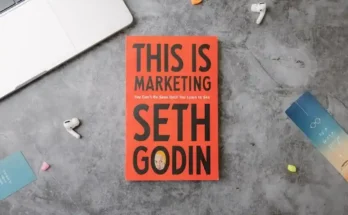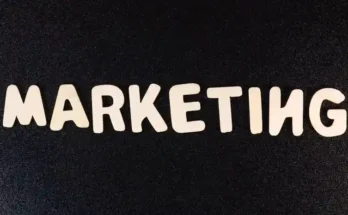Marketing isn’t what it used to be. Gone are the days when a catchy jingle and a newspaper ad could catapult your product to fame. Today’s audiences are savvy, skeptical, and surrounded by an endless stream of noise. To cut through the clutter, brands need more than just visibility—they need resonance. They need magic.
But this magic isn’t made of smoke and mirrors. It’s built on a deep understanding of human behavior, storytelling, strategy, and soulful creativity. Marketing in the modern era is less about selling and more about connecting—less about shouting, more about listening.
This article explores the alchemy of marketing: the powerful process of transforming simple ideas into unforgettable brand experiences.
The Evolution of Marketing in a Digital World:
-
From Megaphone to Micro-Moment
In traditional marketing, the brand held the megaphone. It decided what to say, when to say it, and how it would reach the consumer. Today, the megaphone has shattered into a million micro-moments—individual, personal interactions that occur on social media, in inboxes, on smartphones, and through customer experiences.
Consumers no longer want to be sold to. They want to be understood, inspired, entertained, and engaged. This shift has turned marketing into a real-time, human-centered art form that rewards agility, authenticity, and empathy.
-
The Rise of the Empowered Consumer
With access to reviews, peer opinions, and real-time data, today’s consumer holds more power than ever before. They research before buying. They compare before trusting. They talk back—and their voice matters.
Modern marketers must build trust through transparency and deliver real value through content and experience. It’s not about persuading someone to want what you offer. It’s about creating something they already want—and making sure they find it.
Crafting a Brand that Connects:
-
Storytelling
Facts tell, but stories sell. While features and benefits may close a sale, it’s the story behind a brand that makes people fall in love with it. Stories are how humans make sense of the world. They create emotional resonance, turn abstract ideas into lived experiences, and connect people on a human level.
Your brand’s story doesn’t need to be dramatic—it needs to be honest. Why did you start? What problem do you solve? Who are the people behind the scenes? Tell your story with heart, and people will follow.
-
Visual Identity and Voice
In an attention economy, your brand must be recognizable at a glance. That’s where visual identity comes in—your logo, colors, typography, and imagery should all reflect your essence.
But just as important is your brand’s voice. Are you playful or professional? Bold or comforting? Whether you’re writing an email or posting a tweet, a consistent voice makes your brand feel alive and reliable. It builds familiarity, which builds trust.
Strategy:
-
Knowing Your Audience Inside and Out
Great marketing starts with deep empathy. Who is your audience? What keeps them up at night? What do they dream about? What language do they use? When you understand your audience’s world, you can speak directly to their needs, desires, and pain points.
This isn’t just about demographics—it’s about psychographics. It’s not about age, gender, or income. It’s about values, motivations, and fears. When you market to the why, not just the who, your message hits harder.
-
Mapping the Journey
A successful marketing strategy understands that not every consumer is ready to buy today. People move through stages—awareness, consideration, decision, and beyond.
At each step, your job is to provide value, answer questions, reduce friction, and deepen connection. Content, ads, emails, and experiences should guide users along this journey, nudging them closer to becoming not just customers—but advocates.
The Channels of Modern Marketing:
-
Social Media
Social media has transformed marketing from monologue to dialogue. It’s no longer enough to broadcast a message. You have to join the conversation—and do it with personality, speed, and relevance.
Whether it’s TikTok trends, Instagram stories, or LinkedIn articles, each platform demands a different tone and approach. But across all of them, the golden rule remains: Be real, be responsive, be relevant.
-
Email Marketing
While newer channels steal the spotlight, email remains one of the most effective tools in the marketer’s kit. Why? Because it’s direct, personal, and driven by permission. If someone gives you their email, they’ve given you access to their most sacred digital space—their inbox.
Used wisely, email builds relationships. It informs, entertains, educates, and reminds your audience why they chose you in the first place.
Data-Driven Creativity:
-
Numbers with Heart
Data is no longer optional. Every click, scroll, and conversion leaves behind a trail of insights. Smart marketers use this data not just to optimize campaigns, but to uncover human truths.
What are people responding to? What’s being ignored? Where are they dropping off? Data doesn’t kill creativity—it fuels it. It gives your intuition a foundation to stand on. When used thoughtfully, it transforms guesswork into strategy.
-
Testing, Learning, and Evolving
The most successful marketing teams don’t pretend to have all the answers. They test. They measure. They iterate. They launch with curiosity, not certainty.
A/B testing subject lines, experimenting with ad creatives, or tweaking landing page copy are all ways to learn what works with your audience—not just for them. Evolution isn’t a phase in marketing—it’s the entire process.
Building Community, Not Just Customers:
-
Loyalty Through Value
Repeat business isn’t a fluke—it’s a reflection of value delivered. Brands that consistently provide helpful, delightful, or surprising experiences earn trust over time. And trust turns into loyalty.
Instead of always trying to acquire new customers, smart brands invest in delighting the ones they already have. Loyalty programs, personalized offers, and simply saying thank you can go a long way in turning buyers into believers.
-
The Power of User-Generated Content
People trust people more than they trust brands. That’s why user-generated content—photos, reviews, testimonials, unboxings—is marketing gold. It’s real, relatable, and refreshingly unscripted.
Encourage your customers to share their stories. Highlight their voices. Make them feel like part of something bigger. Community isn’t built by shouting louder—it’s built by listening closer.
The Future of Marketing:
-
Purpose Over Profit
Today’s consumers want to know what your brand stands for, not just what it sells. They care about ethics, sustainability, and social impact. They want to support companies that reflect their values.
Brands that lead with purpose—not just PR—build deeper, more enduring connections. Because in a world of endless choices, people choose meaning.
-
Never Stop Learning
The marketing landscape changes fast. New tools emerge, algorithms shift, and platforms evolve. But one thing remains constant: marketing is about humans. About empathy, curiosity, creativity, and connection.
Keep learning. Stay curious. Try new things. Marketing is a moving target—but with the right mindset, you won’t just keep up. You’ll lead.
Conclusion:
At its best, marketing is about transformation. It’s the bridge between ideas and impact. Between what you make and how others feel. It’s not just strategy or design—it’s storytelling, psychology, and soul.
You don’t need a viral video or a million-dollar budget to create marketing magic. You just need clarity, curiosity, and the courage to connect.
The real alchemy of marketing? It’s you.




